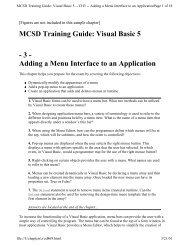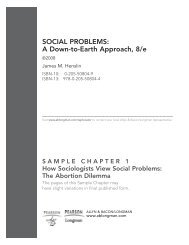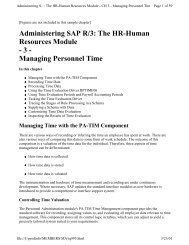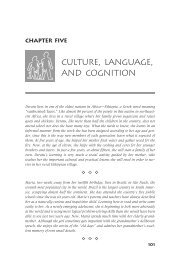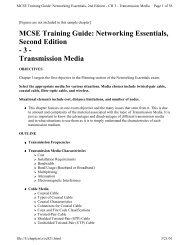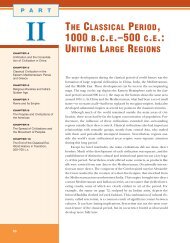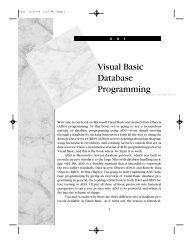3.0—Home Security and Surveillance Systems
3.0—Home Security and Surveillance Systems
3.0—Home Security and Surveillance Systems
Create successful ePaper yourself
Turn your PDF publications into a flip-book with our unique Google optimized e-Paper software.
144<br />
Chapter<br />
................................................<br />
3<br />
Another secret password is used if the owner is in peril or possibly held hostage<br />
by a burglar. This password, when passed after an alarm condition has been<br />
reset, results in a police response. This is the option used if the homeowner is<br />
asked to respond to the monitoring station phone call by an intruder who<br />
(hopefully) does not know the distinction between the two passwords.<br />
Passwords are used only if the monitoring station needs to authenticate the<br />
cause of an alarm condition when the residents are at home. Law enforcement<br />
agencies can penalize homeowners for excessive false alarms.<br />
Common sense should guide the selection of a security system password used with a<br />
monitoring service. Never use family or pet names, birth dates, street names, or any<br />
word found in the dictionary. The preferred password should include both letters <strong>and</strong><br />
numbers, <strong>and</strong> a password should be memorized <strong>and</strong> never be written down. Numeric<br />
keypad codes should also avoid the use of birth dates or home address numbers.<br />
Keypad Locations<br />
Keypads are located by most contractors on the inside wall near the door most<br />
often used by the occupants. They are also frequently located in the bedroom<br />
to provide easy access by the users when retiring or arising. Keypads used for<br />
home security perimeter protection are not recommended for outside mounting<br />
because this would allow tampering, v<strong>and</strong>alism, or attempts by an intruder<br />
to search for a correct code. Some exceptions to this rule are applications<br />
such as exterior security gates <strong>and</strong> gated community entrances.<br />
Sensor Locations<br />
Sensors perform all the functions required for detecting <strong>and</strong> reporting an intrusion<br />
in the area they are designed to protect. Window <strong>and</strong> door sensors are<br />
installed on the door or window frame. Window sensors can be protected by<br />
either a magnetic switch that detects an opening of the window frame or other<br />
types mounted on the window to detect the sound or vibration of broken glass.<br />
Interior surveillance cameras <strong>and</strong> motion detectors are usually wall mounted<br />
<strong>and</strong> are used to protect open areas where an intruder might be able to defeat<br />
the perimeter security system sensors.<br />
Exterior surveillance cameras <strong>and</strong> security lighting systems should be located<br />
in areas near the front, side, <strong>and</strong> rear entrances to detect intruders before<br />
they reach the perimeter security sensors.<br />
Motion Detector Locations<br />
Motion detectors are usually mounted in the corner of a room. This enables the<br />
PIR type of motion detector to cover a 90° field. As illustrated in Figure 3.7,<br />
they are sensitive to movement across the sensor field of view.





